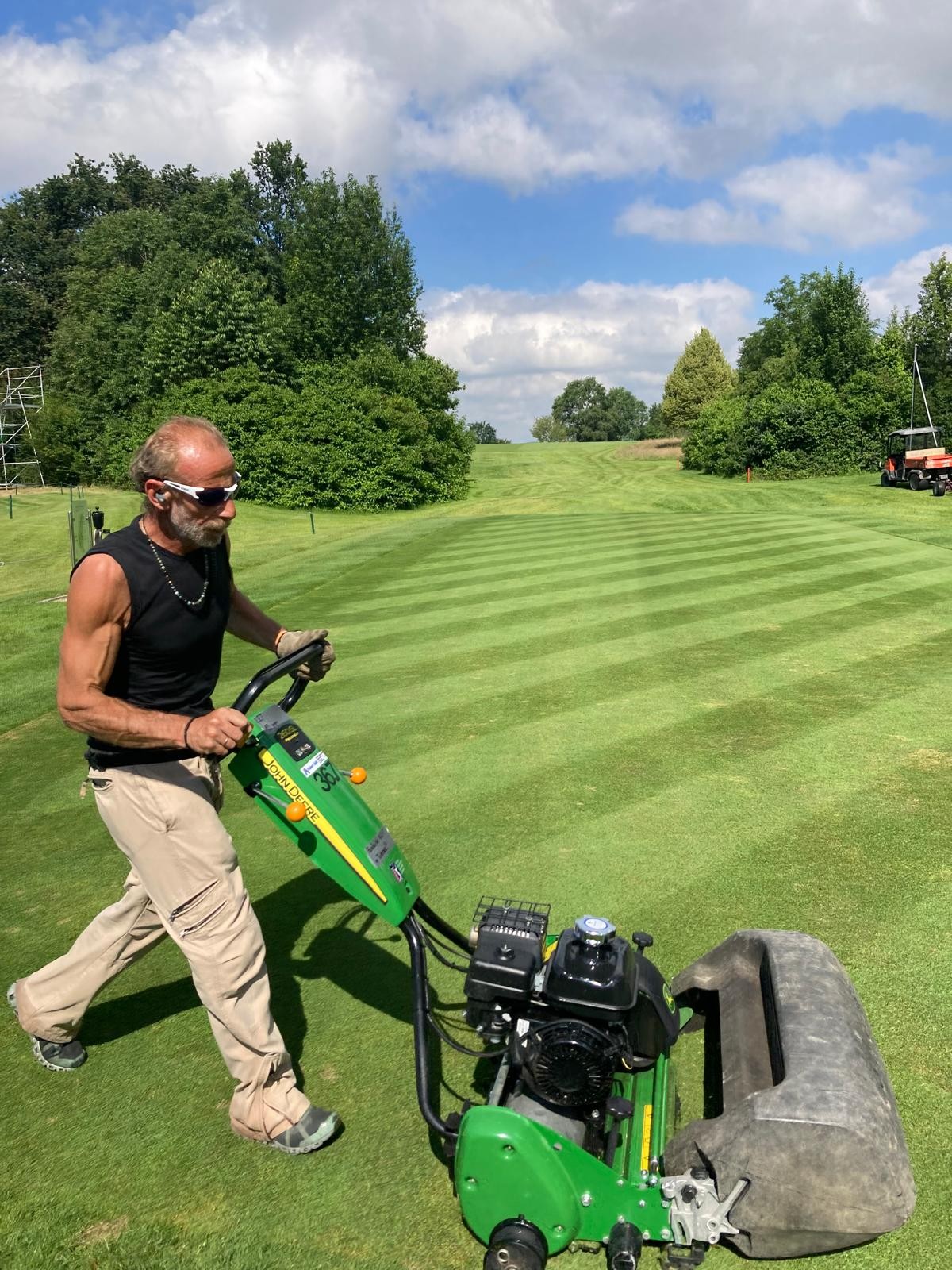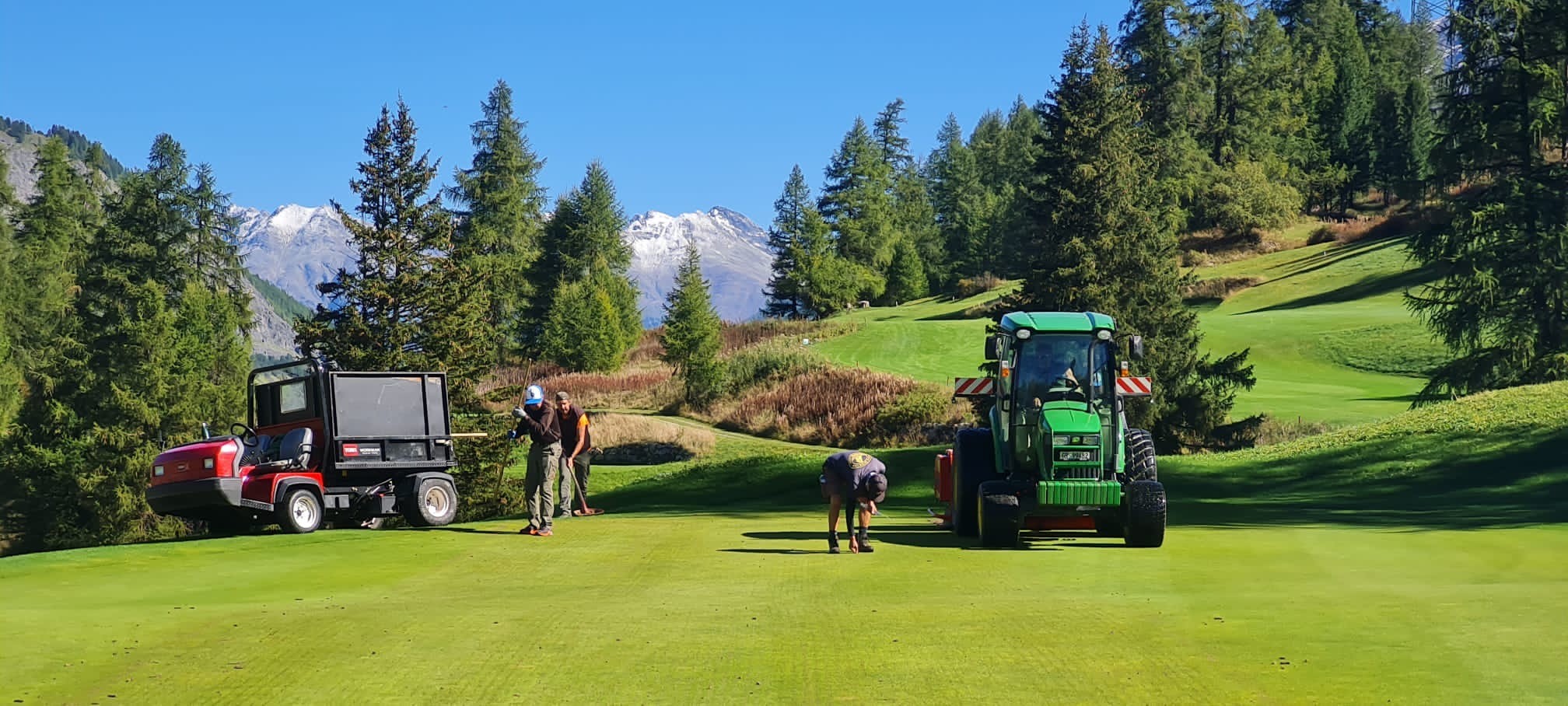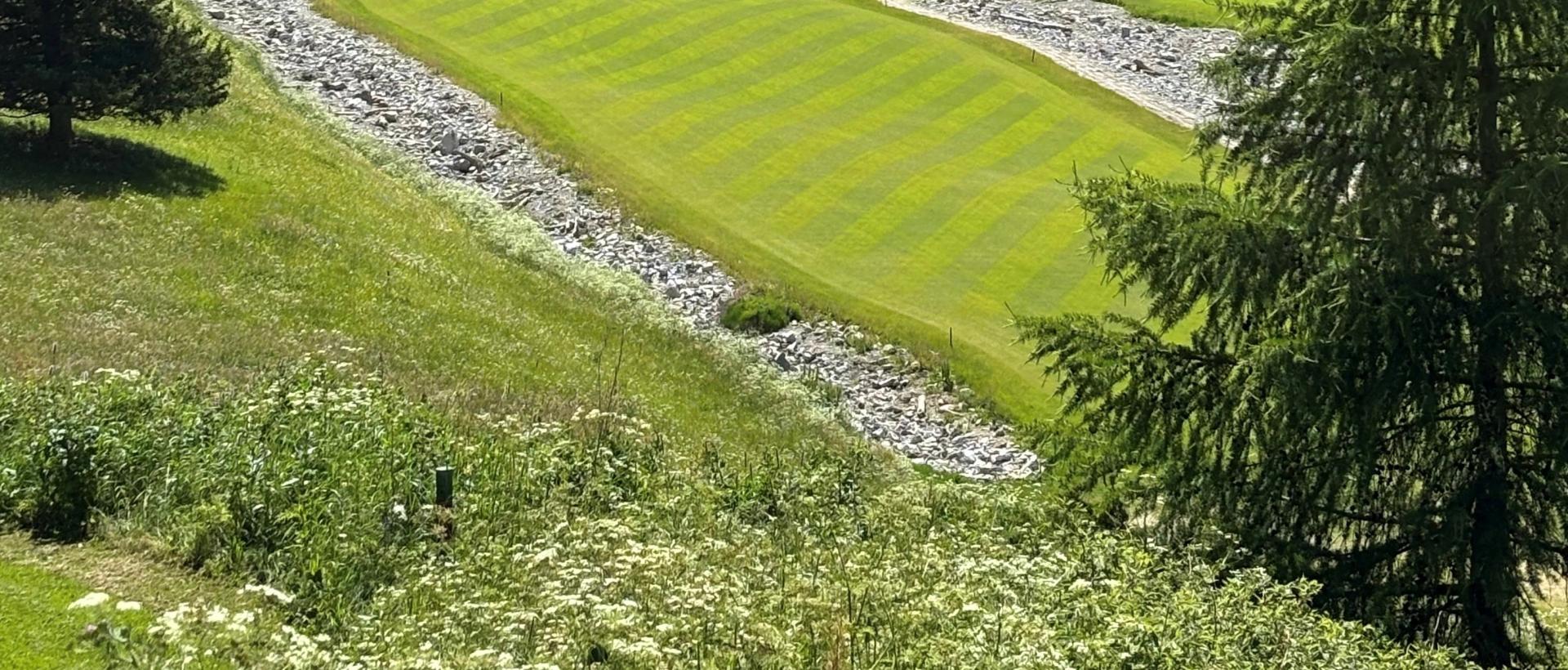
Giovanni Brusadelli, you are mainly found on the course in Zuoz. Is that by chance or your preferred location?
More by chance (smiles). When I started in May 2009, I was assigned directly to Zuoz – not because I liked this course better, but because they needed someone on the team there at the time. Sometimes I also help out in Samedan, especially at the beginning or end of the season, or when extra help is needed for tournaments and special maintenance work.
Do you have a favourite spot on the course?
Yes, several. Before or after work, I like to walk around the course to check its condition. I stop at certain spots for a while and enjoy the view. Thanks to the elevated tees, Zuoz offers many fantastic vantage points: for example, at the tees of the 18th, 1st, 4th, 15th or 16th.
You've been working on the Engadin courses for 17 years now. That must be true passion.
For me, it was actually love at first sight. Even as a child, I wanted to work with nature, which is why I trained in agriculture. I have always been particularly fascinated by the beauty of the courses, the well-maintained fairways and the perfectly mowed greens. What I like most is the daily challenge of making the course a little bit better. Even when the weather is not cooperating, we always look for the best solution. I also remain curious and keep myself informed about new machines, techniques and methods.
-
This year the greens were in exceptionally good condition, many say: faster than ever. How did you achieve that?
We’re very pleased with the positive feedback. The maintenance work was planned in advance together with Head Greenkeeper Simone and aimed at achieving certain standards. In recent years, we’ve increasingly introduced fescue mixes, which provide greater resistance to winter stress. Thanks to the excellent starting condition after winter, we were able this spring to immediately implement the planned measures: frequent light sand dressings, tailored fertilisation, daily dew removal, alternating mowing and rolling – and of course, a lot of dedication from the whole team. That said, super-fast greens aren’t to everyone’s liking, especially in Zuoz with its strongly undulated surfaces (laughs).The season is coming to an end. How do you prepare the courses for winter?
This includes aeration measures (hollow coring and Verti-Drain) on greens, tees and fairways. The irrigation system is completely emptied to prevent frost damage. Cutting heights are raised, mowing frequency is reduced and suspended entirely during frost. Sometimes we also apply potassium fertiliser to improve the turf’s winter hardiness.Players sometimes struggle to understand measures like hollow coring and Verti-Drain, since they make the courses unplayable or only partly playable. Why are these measures so important?
Deep aeration ensures that water drains properly and prevents waterlogging. It creates space for roots to grow deeper and become more resilient. The soil is loosened, oxygenated, and able to absorb nutrients more effectively.How can players contribute to course maintenance?
With simple things: repairing pitch marks, replacing divots, raking bunkers, disposing of broken tees. It may sound trivial, but it’s very important.
For example: mowing all the greens takes about four hours. If there are lots of pitch marks, we have to allow extra time to repair them before mowing. It’s the same with divots and unraked bunkers. Even small things like stray tees can cause damage to machines and turf.Why is it so important to repair pitch marks immediately?
Because the open spots become entry points for weeds, fungi and pests. If repaired straight away, nothing is visible after just a few days. Besides damaging the turf, pitch marks also affect play: a ball can change direction – very annoying when it was rolling straight towards the flag.Why should divots be replaced?
Otherwise, open areas also develop here, which can be filled by weeds or disease – and nobody enjoys hitting out of a divot hole. It’s important to press the divot down firmly after replacing it so it grows back and the surface is level again.What else should be kept in mind that is often forgotten?
For example, not pulling trolleys between green and bunker – this protects the delicate aprons. Some players even place their trolley on the tee or the green, which should be avoided. Unfortunately, we also often see people entering biotopes or driving golf carts in awkward manoeuvres to get as close to the ball as possible, leaving tyre marks – especially in humid conditions.Apart from player cooperation, how else can you keep them happy?
In the past, greenkeepers were often “invisible” and we had little contact with members. Luckily, that’s different today: we regularly exchange views, sometimes share a coffee or a beer together. I appreciate that our work is more valued now. We don’t just “cut grass” – we ensure every day that the courses are in top condition. My wish: let’s maintain this respect and good cooperation – then everyone will enjoy the game and the course.













